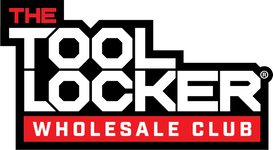
Construction Safety Equipment: everything you need to know
Why is Construction Safety Equipment so important? Construction sites are often located in remote areas where safety equipment can be hard to obtain or operate. However, many places require safety equipment when they work with hazardous materials and machinery. The equipment and the machines used on sites can be a threat to the workers who use them as well as cause accidents. In general, safety equipment is used to help protect workers from falls, electrocution, chemicals, machinery, and other hazards.
What are the main personal protective equipment?
Personal protective equipment, commonly referred to as "PPE", is equipment worn to minimize exposure to hazards that cause serious workplace injuries and illnesses. These injuries and illnesses may result from contact with chemical, radiological, physical, electrical, mechanical, or other workplace hazards. Personal protective equipment may include items such as gloves, safety glasses and shoes, earplugs or muffs, hard hats, respirators, or coveralls, vests and full body suits.
Now we’ll list the most used Safety Equipment for Construction in case you have any doubt!
Glasses:
Safety glasses can be a full-facial shield or goggles that cover the eyes. They protect the eyes from dust and debris and prevent objects from being kicked into the eyes.
Hard hats:
The hard hats are a protective headgear that protects the head from falling objects, like nails or bolts. The hats can be manufactured from plastic, foam, and even aluminum. The hats provide additional protection for the neck and back of the head and impact protection for the face.
Footwear:
Logging boots, also known as steel-toe boots, are often recommended for workers that work with heavy equipment or machinery. These heavy-duty boots provide extra protection in the toes and around the whole foot to help prevent damage from impacts and falling objects. Steel toe boots usually come with a steel cap tread on the bottom to help protect in slippery areas.
Ear protection:
Ear protection is essential if you'll be working around loud noises. You can choose between two main categories of ear protection: earplugs and earmuffs. Earplugs fit inside your ear canal and block out noise, while earmuffs sit over your ears and do the same job.
Gloves:
Workers often use rubber or leather gloves for extra grip on the equipment or to prevent contamination from their hands getting into a project area. Depending on how much protection is needed, gloves can range from simple leather gloves to chemical-resistant gloves that can withstand high heat or chemicals. You can check it out at The Tool Locker. Ask us for advice before choosing the right product.
Respirators:
Respirators are used to protect workers from contaminants in the air. Various respirators are available for different sizes of faces and levels of protection against particular hazards such as organic vapors, gases, dust, or chemicals. NIOSH-rated Respirators for their effectiveness in filtering contaminants out of the air, how long they can last before they need to be replaced and how well they fit on a person's face.
Fall protection:
Fall protection equipment prevents workers from falling to the ground or up high into areas where they could get severely injured. Safety harnesses and fall arrestor lines are available for the workers to use when working on scaffolding or other elevated sites. When using safety equipment, such as harnesses, ensure that the user is adequately tethered to a secure fixture and that the line is safely attached to the work site.
Machinery guards:
Some machinery can cause injury if unguarded, so many pieces of machinery already have guards installed on them. These guards are designed to protect workers from damage caused by moving parts and sharp edges. The guard will be rated to ensure it is hard enough to help protect the user.
Other Safety Equipment for Construction
Other safety equipment includes personal flotation devices, fire extinguishers, and fall arrestor lines. All sites should have at least one fully charged fire extinguisher for emergencies.
The National Fire Protection Association has a set of standards that should be followed for all areas when designing fire extinguishers. One of these standards is the minimum number of fire extinguishers on-site.
Buy personal protective equipment at The Tool Locker
At The Tool Locker, we offer a wide range of personal protective equipment for construction to help you protect you and your team from the risks at the building sites.
The Tool Locker is a dedicated U.S. Ecommerce company looking to make things easier for building contractors. For sure this will be your favorite shop to buy professional tools online from the best construction brands such as Milwaukee or Diablo.
Moreover, we run a Professional Club where, as a member, you can get special discounts, wholesale pricing, free freight and many exclusive benefits. Contact us and discover what we can offer you.





Leave a comment